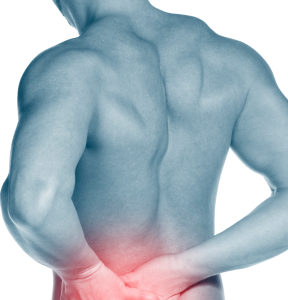 A MASTERPIECE OF ENGINEERING
A MASTERPIECE OF ENGINEERING
You sit on them, need them to walk (your legs connect to them) and they provide an attachment for dozens of muscles and ligaments. They are your HIPS—a masterpiece of engineering!
But like any precision instrument, if they’re not fitting just right, all kinds of problems could arise. Do your joints “click” when you walk? Do your feet flare out or in? Does one leg appear shorter than the other? Do you have leg, knee, buttock, hip or low back weakness or pain? If you answered yes, it’s time to get a chiropractic checkup.
CHIROPRACTORS CORRECT SUBLUXATIONS
Subluxations are a distortion, jamming or locking of your structural system that irritates, pulls or compresses (“pinches”) your nerves; unbalances your posture; weakens your discs; stretches your ligaments, tendons and muscles and can upset your general health. As terrible as all this sounds, many times subluxations are often initially painless. You may have one right now and not know it.
YOUR HIPS AND PELVIS 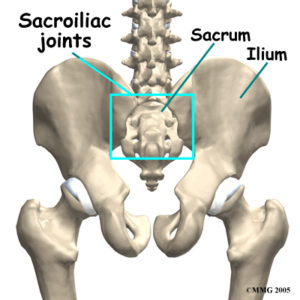
When you were born you had many more bones—in fact each of your hip bones was originally three separate bones: the ilium, ischium and pubis. They fused at about puberty. Behind your hip bones are your sacrum and coccyx; in front they form your pubic bones. Together all these bones make up your pelvis. A woman’s pelvis is wider than a man’s and is more curved—for delivering babies.
YOUR HIP JOINTS
A joint is where two bones meet and your hips have a few of them. One of them is a ball-and-socket joint where the head (“ball”) of the thigh bone meets the acetabulum (“socket”) of the hip. Another is the sacroiliac (SI) joint, formed where the sacrum and the ilium meet. And another is the symphysis pubis, where the pubic bones meet in the front (they separate a little during childbirth so the pelvic cavity can enlarge).
LOWER BACK, BUTTOCK, AND THIGH PAIN
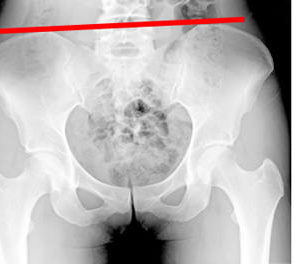 Studies have implicated an unbalanced hip in most adults with low back pain.1-2 Dysfunction in the hip joint may be a primary factor in the development of lower back pain.3 According to one study: “On confronting a patient in severe pain of sciatic [leg pain] … the first thought should be “sacroiliac” not “disc” … [with] manipulation … surgical treatment is forgotten.”4
Studies have implicated an unbalanced hip in most adults with low back pain.1-2 Dysfunction in the hip joint may be a primary factor in the development of lower back pain.3 According to one study: “On confronting a patient in severe pain of sciatic [leg pain] … the first thought should be “sacroiliac” not “disc” … [with] manipulation … surgical treatment is forgotten.”4
PELVIC ORGANS AND YOUR HIPS
The nerves from the spinal column in the lower back and hips connect to the bladder, kidneys, prostate, vagina and pelvic organs, uterus and lower intestines. It is very important to ensure that the nerves to these organs are free of any irritation, compression or stress.5
In fact, for over a century chiropractors have noticed the intimate relationship between spinal health and hip, sacroiliac and leg problems.6-7
When your hips are uneven, your legs become uneven; one appears longer than the other. More pressure is placed on the long leg when you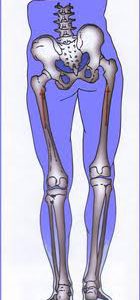 walk: the knee, hip, ankle and foot on that side of your body may show pain and pressure. This is most noticeable when you lie down and is often used as a chiropractic test.
walk: the knee, hip, ankle and foot on that side of your body may show pain and pressure. This is most noticeable when you lie down and is often used as a chiropractic test.
PREGNANCY
Pregnant women make hormones to relax their joints for easier delivery of the baby. However, if their spines are not healthy, instability of the hip (and other) joints may be revealed and may make what should be a joyous time one of pain. Chiropractic care is particularly helpful during and after pregnancy. Chiropractors have noticed that a properly aligned SI joint, hip and spine helps ensure a more comfortable pregnancy and a safer and easier delivery and post-partum recovery.8-10
CHILDREN’S HIP PROBLEMS
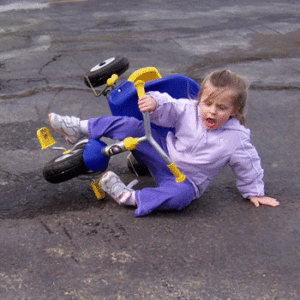 Since childhood is a very physical time full of falls, accidents, cuts, scrapes and occasional serious injuries, children should have their spines checked regularly, including their hips, their leg lengths and their SI or sacroiliac joints by a doctor of chiropractic to ensure they are free of subluxations. Chiropractors and body workers have often observed that a stressful birth can damage a child’s spine and structural system and can cause problems in adult life if not corrected.11-15
Since childhood is a very physical time full of falls, accidents, cuts, scrapes and occasional serious injuries, children should have their spines checked regularly, including their hips, their leg lengths and their SI or sacroiliac joints by a doctor of chiropractic to ensure they are free of subluxations. Chiropractors and body workers have often observed that a stressful birth can damage a child’s spine and structural system and can cause problems in adult life if not corrected.11-15
CONCLUSION
Chiropractic checkups should be part of your family’s healthcare regime. This is especially important for children since sacroiliac and lower back problems may have their origins in childhood.
Pregnant women should definitely have a chiropractic exam since the stress of pregnancy and trauma of childbirth affect the hips and entire spinal column.
Why wait for a problem to arise? See your chiropractor for a checkup now.
Call Performance Chiropractic at (661) 942-5000.
References
- Jackson RP, Kanemura T, Kawakami N et al. Lumbopelvic lordosis and pelvic balance on repeated standing lateral radiographs of adult volunteers and untreated patients with constant low back pain. Spine. 2000;25(5):575-586.
2. Sherman A. emedicine.medscape.com/article/96054-overview#showall Retrieved 8/20/14 from medscape.com.
3. Highsmith J. What is sacroiliac joint dysfunction? www.spineuniverse.com/node/36120 Retrieved 8/20/14 from spineuniverse.com.
4. Bourdillon J, Day E. Spinal Manipulation (4th Edition). Norwalk, CT/Los Altos, CA: Appleton and Lange, 1987;228-230.
5. Browning JE. Distractive manipulation protocols in treating the mechanically induced pelvic pain and organic dysfunction patient. Chiropractic Technique. 1995;7(1):1-11.
6. Rose KA, Kim WS. The effect of chiropractic care for a 30-year-old male with advanced ankylosing spondylitis: a time series case report. JMPT. 2003;26(8):524-532.
7. Cassidy JD, Kirkady-Willis WH, McGregor M. Spinal manipulation for the treatment of chronic low back and leg pain: an observational study. In AA Buerger & PE Greenman (Eds.), Empirical Approaches to the Validation of Spinal Manipulation. Springfield, IL: Charles C. Thomas, 1985.
8. Leboeuf-Yde C, van Dijk J, Franz C, Hustad SA, Olsen D, Pihl T et al. Motion palpation findings and self-reported low back pain in a population-based study sample. JMPT. 2002;25:80-87.
9. Van De Pol G, Van Brummen HJ, Bruinse HW, Heintz AP, Van Der Vaart CH. Pregnancy-related pelvic girdle pain in the Netherlands. Acta Obstet Gynecol Scand. 2007;86:416-422.
10. Adams JP. Chiropractic and nutritional management and its effect on the fertility of a diabetic amenorrheal patient: a case report bio. JVSR. October 12, 2003:1-2.
11. Mierau DR, Cassidy JD et al. Sacroiliac joint dysfunction and low back pain in school aged children. JMPT. 1984;7(2):81-84.
12. Lewit K. Functional disorders (fixations) of the spine in children. Manuelle Therapie. 1973:50-54.
13. Biedermann HJ. Kinematic imbalances due to suboccipital strain in newborns. Manual Medicine. 1992;6:151-156.
14. Stone-McCoy PA, Grande NA, Roy I. Reduction of congenital torticollis in a four month old child with vertebral subluxation: a case report & review of literature. JVSR. January 7, 2008:1-8.
15. Anderson C. The consequences of birth trauma. A case report of failure to thrive in an infant with cephalohematoma and congenital torticollis The Chiropractor’s Choice. June 2004:15.